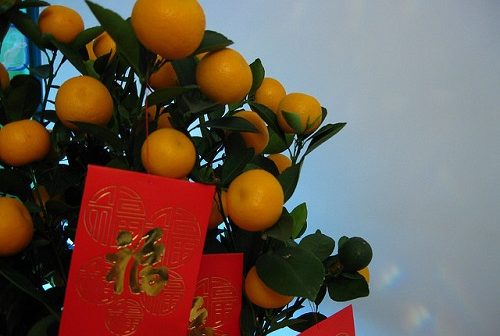One of the Chinese traditions that as a foreigner you have to grasp quickly, is the concept of the Chinese red envelope. Whether you’re in China for business or pleasure, you’ll encounter situations in which you’re expected to give a hongbao (红包 HóngBāo). Hongbao is an amount of money given as a gift to someone, tucked in an ornate red envelope. The red color of the envelope symbolizes good luck and is supposed to ward off evil spirits. During the Chinese Spring Festival, people of a higher rank are expected to give away hongbao. Bosses and managers will give an envelope to their employees, and parents will give one to their children.
When the gift is for children, it’s called yasuiqian (压岁钱 YāSuìQián), which literally means “pressure age money”. During the Ming and Qing Dynasties, the yasuiqian was given to children in the form of coins tied with a red string. It was believed to protect the children from evil spirits, and it also encompassed the sentiment of passing on good fortune. Today, parents tend to give a single RMB 100 note to their children, and to nieces and nephews, in a sealed envelope. It is polite to avoid opening the envelopes in front of relatives. If you’re an unmarried adult, you are still regarded as a child, when it comes to receiving hongbao.

If you have an ayi (阿姨 ĀYí), and a driver, you’re also expected to give a hongbao. This bonus is given right before the Chinese New Year holiday, and is meant to help people return to their hometowns to see their families. The amount in the hongbao isn’t fixed, but an ayi will expect an amount equal to her monthly salary. If your ayi and driver have been with you for less than a year, you can pro-rata accordingly. You’re not forced to give the double salary amount in the red envelope, but it might avoid having a disgruntled employee or worse still no employee after Spring Festival. In many companies, the hongbao is often given as the 13th month of salary and paid in January. Sadly, if you’re above the minimum salary income, this bonus will be taxed.
The amount of money contained in the envelope, is usually a round number. Even numbers, except four, are better than odd, and eight is a particularly auspicious number. There is widespread tradition that money should not be given in fours, or the number four should not appear in the amount, as the pronunciation of the word “four” (四 Sì) resembles that of the word “death”(死 Sǐ) and thus signifies bad luck for many Chinese. The money inside a red envelope should always be new and crisp. Folding the money or giving dirty or wrinkled bills is in bad taste. You can buy red envelopes at any supermarket and stationary shop, just be sure to check that it doesn’t say “Congratulations on your marriage” if it’s for Chinese New Year.

If you’re invited to someone’s home for Chinese New Year, it is tradition in China to present hongbao to the children and gifts to the adults. If your hosts drink alcohol, they’ll appreciate a nice bottle of whatever it is they like most. Boxed loose leaf tea is always a nice gesture and the fruit basket is a ubiquitous symbol of Chinese New Year. Giving a box of oranges or a box of apples is also welcomed, as respectively they symbolize safety and fortune. Sweets, nuts, and the ever popular Ferrero Rocher, also make good gifts. Cut flowers aren’t normally a traditional gift for hosts in China, but small orange or kumquat trees are very traditional. If you’re wrapping a gift, there are some colors for the paper and ribbons that are preferred. Red is lucky, pink and yellow symbolizing happiness, and gold is for fortune and wealth. Avoid white and black, which are used in funerals and symbolize death.
beijingkids Shunyi Correspondent Sally Wilson moved to Beijing in 2010 from the UK with her husband and son. Her daughter was born here in 2011 and both her kids keep her happily busy. In her spare time, Sally loves to stroll through Beijing’s hutongs and parks. She is a (most of the time) keen runner and loves reading: books, magazines, news, and celeb websites – anything really. Sally is also a bit of a foodie and loves trying out new restaurants.
Photos: Sienia Trevellion, Micah Sittig, Vincci (Flickr)





1 Comment
Pingback: Hongbao Madness: the Digital CNY Tradition – coolkid